Can embracing plurilingualism transform education?
Dr Caroline Payant, an applied linguist at Université du Québec à Montréal in Canada, is exploring the power of plurilingualism – the use of multiple languages – in language education. She highlights the potential of plurilingualism to reshape not only our classrooms, but also our perceptions of language, culture and identity.
Talk like an applied linguist
Input — the information that an individual receives (e.g., hearing speech or reading text)
Language repertoire — the collection of (partial) language knowledge that someone has access to in order to communicate with others
Monolingual approach — a language teaching method in which only the target language is allowed to be used in the classroom
Plurilingual approach — a language teaching method that acknowledges and embraces all the linguistic knowledge that students have access to
Plurilingualism — the ability to understand and communicate in multiple languages, embracing the rich diversity of languages and cultures
Imagine stepping into a classroom where every language spoken by each student is not just tolerated but celebrated – a place where linguistic diversity is not viewed as a barrier but as a bridge to deeper understanding and connection. In today’s globalised world, the ability to communicate across linguistic divides is not just a valuable skill but a necessity, and the role of language in education has taken on new significance. Language is a tool for exchanging ideas and forming relationships, and it is the foundation for sharing cultures and respecting each other.
What is plurilingualism?
Dr Caroline Payant, an applied linguist and language teacher educator at Université du Québec à Montréal, is reshaping language education by advocating for plurilingual teaching approaches. “Plurilingualism, as both a theoretical perspective and an approach to language teaching and learning, focuses on exploring an individual’s holistic language repertoire,” explains Caroline. “Their repertoire may include knowledge of multiple languages, each with varying levels of proficiency.”
Plurilingualism is more than just speaking multiple languages; it is about embracing the rich diversity of languages and cultures that defines each of us. Each language we speak offers a unique window into aspects of our culture and ways of thinking. It is this diversity that enriches our understanding of the world and allows us to connect with people from different backgrounds.
How does your language repertoire influence your identity?
Our language repertoire is profoundly connected with our sense of self and belonging. The languages we choose to speak in different situations reflect not only where we come from, but also our personal experiences and cultural heritage. Each language carries a unique set of associations and emotions which shape how we express ourselves and perceive the world around us.
Our language repertoire can also influence how other people view us, as our choice of language might cause some people to make assumptions about aspects of our identity, such as social status or level of education. “Languages are social constructs with varying degrees of prestige,” says Caroline. “Societal perceptions of our linguistic choices can positively or negatively influence how we perceive ourselves and how others view us. In an ideal world, all languages and their speakers are treated equally, but the reality is marked by pervasive inequalities.” Recognising the complex relationships between language, society and identity is crucial for creating more inclusive linguistic environments where individuals feel empowered and respected regardless of the languages they speak.
What are the arguments for and against a monolingual approach in language education?
The use of a monolingual approach in language education is a key topic of debate. Many language teachers believe that only the target language should be spoken in the classroom – all instruction and communication should be in the target language and students should never use their first language in additional language classes. “Support for a monolingual approach stems from the belief that language development mirrors the natural process of acquiring a first language,” says Caroline. “Advocates argue that the role of input is pivotal and emphasise that providing exclusive input in the target language is essential for language learning.”
However, Caroline believes that a monolingual approach is not the best way to help students learn. “When you learn a new language, it’s impossible to ignore the languages you already know,” she explains. “There is strong evidence that all languages are activated during social interactions. As such, you can use what you know in one language to help you understand and learn another.”
How does plurilingualism impact learning?
It is important for all students to feel accepted in the classroom. “A monolingual stance can inadvertently reinforce societal ideologies that assign greater importance to certain languages over others,” says Caroline. “This perceived hierarchy needs to be deconstructed.” To create a fairer world, we need to recognise and celebrate the value of all languages and the diverse cultures they represent by embracing a plurilingual approach to language education.
Plurilingualism cultivates an inclusive learning environment where students are encouraged to explore their linguistic diversity. In Canada, for example, while most people can communicate in English and/or French (the country’s official languages), in 2021, 25% of Canadians reported having a different language as their first language (Mandarin and Punjabi being the most common). Canada also has also over 70 Indigenous languages, spoken as a first language by <1% of the population.
In language classes, Caroline invites learners to engage with their various languages through creative activities such as language portraits, which connect languages to body parts and personal experiences. “For instance, in my case, when I think of French, I think of my heart,” she says. “I associate this language with my family, roots and heritage.” This approach encourages students to embrace all the languages they know.
What has Caroline discovered?
Reference
https://doi.org/10.33424/FUTURUM490
Caroline’s research on the importance of plurilingualism in language education reveals significant insights into both student and teacher perspectives. “Learners express a sense of value and motivation when their various languages are acknowledged and encouraged,” says Caroline. “Conversely, when restricted from using their languages at school, a feeling of insecurity or disrespect emerges.”
Teacher attitudes towards plurilingual approaches still vary. Some believe students will be confused if multiple languages are spoken in the classroom, while others recognise the importance of valuing all students’ backgrounds and have developed creative activities that highlight students’ language repertoires. Caroline is determined to deconstruct the myths around monolingual and plurilingual approaches and to educate teachers on how best to support their students and create an inclusive educational environment.
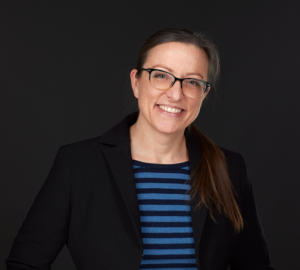 Dr Caroline Payant
Dr Caroline Payant
Department of Language Teaching, Université du Québec à Montréal, Canada
Fields of research: Applied linguistics, plurilingualism in language education
Research project: Exploring the importance of plurilingualism in language education
Funders: Social Sciences and Humanities Research Council of Canada (SSHRC/CRSH); Fonds de recherche du Québec – Société et culture (FRQSC); Faculty of Education at Université du Québec à Montréal
About applied linguistics
Applied linguistics explores the practical applications of linguistics – the study of languages and their structures. It encompasses areas such as language teaching, language policy and sociolinguistics. Applied linguists study how languages are learnt, taught and used in different contexts.
How can plurilingualism promote social justice?
“Plurilingualism plays a very important role in promoting social justice, diversity and inclusion by challenging the ideology that there is a ‘right way to speak’,” says Caroline. “This ideology designates one language or language variety as ‘correct’, while marginalising others as ‘inferior’.” By recognising and valuing the diverse language repertoires of individuals and communities, plurilingualism challenges these colonial linguistic hierarchies. Plurilingualism has the potential to create a more inclusive and equitable society where all languages and cultures are respected and celebrated.
Why is it important to learn about cultures when learning languages?
Learning a new language goes beyond acquiring linguistic skills; it also involves understanding the culture(s) associated with that language. “The study of culture, which is by no means simple, enables exploration of values, ways of being and societal norms through language,” says Caroline. “This holistic approach enriches language development. It offers insights into the beliefs, traditions and history of the language community and fosters a deeper connection with the language and its people.”
Pathway from school to applied linguistics
At school and beyond, take classes in your country’s official language(s) and in foreign languages. These will introduce you to linguistic exploration and give you an appreciation for the similarities and differences between different languages. Study the culture and literature of the languages you learn to gain a deeper understanding of them.
Communicate with speakers of different languages to learn more about the cultures associated with them and to practise your language skills. If possible, talk with family, classmates and neighbours who have a different first language to you, watch films and TV shows in different languages, and if you travel somewhere with a different language, learn words and phrases and use them to communicate with local people.
Look for volunteer opportunities in your community or online that involve language-related tasks. This could be tutoring immigrants in your country’s official language or working with organisations that promote language education.
At university, study linguistics or a language degree, followed by a postgraduate degree in applied linguistics. “Start by taking theoretical linguistic courses,” advises Caroline. “These provide a formal study of languages from around the world, offering a comprehensive understanding beyond your country’s official language.” Specialised courses in sociolinguistics will cover how language interacts with society, culture and identity, while courses in computer programming will be useful if you are interested in developing language technology, such as language learning apps or translation tools.
Explore careers in applied linguistics
A career in applied linguistics offers diverse opportunities in fields such as language teaching, curriculum development and language technology development.
Caroline recommends exploring the work of plurilingual researchers, such as at McGill University (www.mcgill.ca/plurilinguallab/resources) and Université de Montréal (www.elodil.umontreal.ca).
Teaching English to Speakers of Other Languages (TESOL) provides a wealth of information about careers in language teaching: www.tesol.org/careers
Meet Caroline
French is my home language – the language I spoke growing up in my home. But, living in a bilingual Canadian city, I had the privilege to learn English at school and in the community. When I moved to Mexico for work, Spanish and English became my main languages for work and social interactions. Because I wasn’t speaking much French, I became insecure about my abilities when I did communicate in French – I felt I was no longer ‘good’ at speaking it. Now, I understand that I should never feel insecure about my languages and am proud to use my whole language repertoire whenever possible with as many people as possible.
My journey into applied linguistics was initially sparked by an interest in psycholinguistics because I wanted to understand how the brain processes two languages. While studying in Mexico, I explored how bilinguals mentally organise words. Over time, my motivation evolved towards using this knowledge to enhance learning experiences for students learning additional languages.
For my postgraduate research in the US, I questioned whether learners drew on knowledge of their first or second languages when learning a third language. This revealed that students made judicious use of their other languages, which was positive. But it also revealed teachers’ resistance towards incorporating their students’ first languages in the classroom. Many language teachers inadvertently encouraged students to reject their plurilingual identity and become ‘monolingual’ in two languages. This realisation troubled me, and I became determined to dispel the myth that using a first or second language in the process of learning additional languages would have detrimental effects on the student’s experience.
During the pandemic, I started learning the Korean alphabet, Hangul, with the language-learning app, Duolingo. I loved the cognitive challenge but felt I needed to learn with peers to interact in the language, so I now take formal Korean lessons in Montreal. To practise, I communicate with my Korean friend, read children’s books in Korean and watch Korean videos for children. I also type Korean sentences into Google translate to obtain the French or English translations, a plurilingual strategy, which allows me to practise my productive skills as I’m forced to create output in the target language.
When I am not working, I enjoy walking with my poodle, gardening and boxing. I also love snowboarding and I enjoy playing board games as this gives me the opportunity to spend quality time with family and friends.
Do you have a question for Caroline?
Write it in the comments box below and Caroline will get back to you. (Remember, researchers are very busy people, so you may have to wait a few days.)
Learn more about the relationship between language and community:

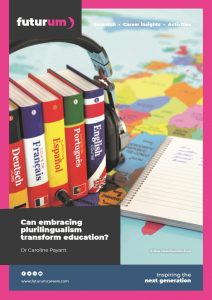
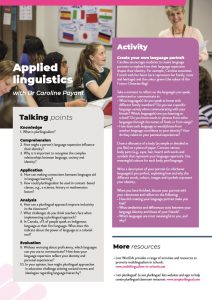
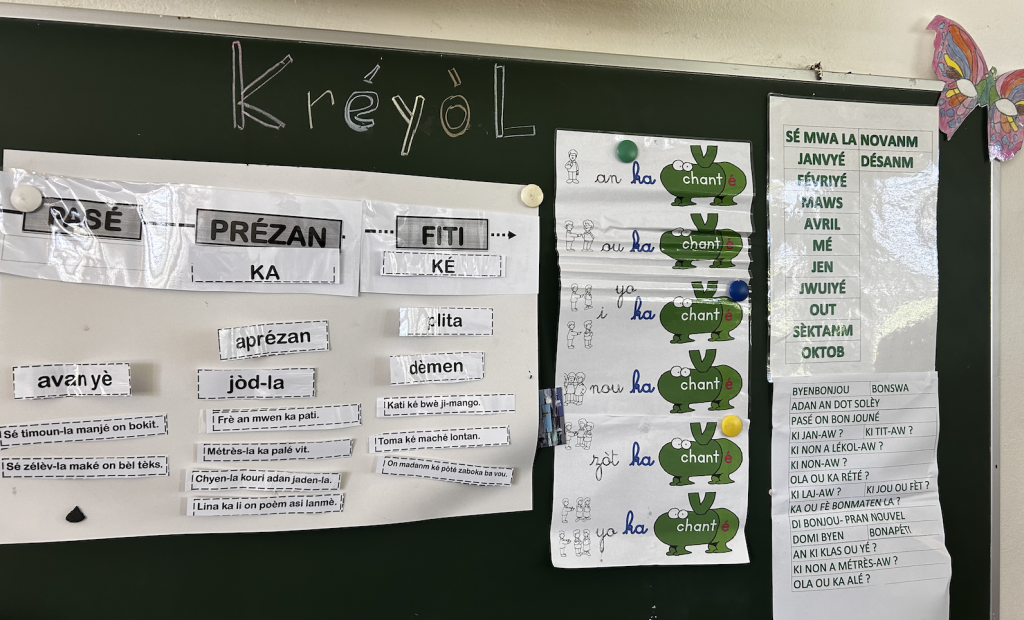
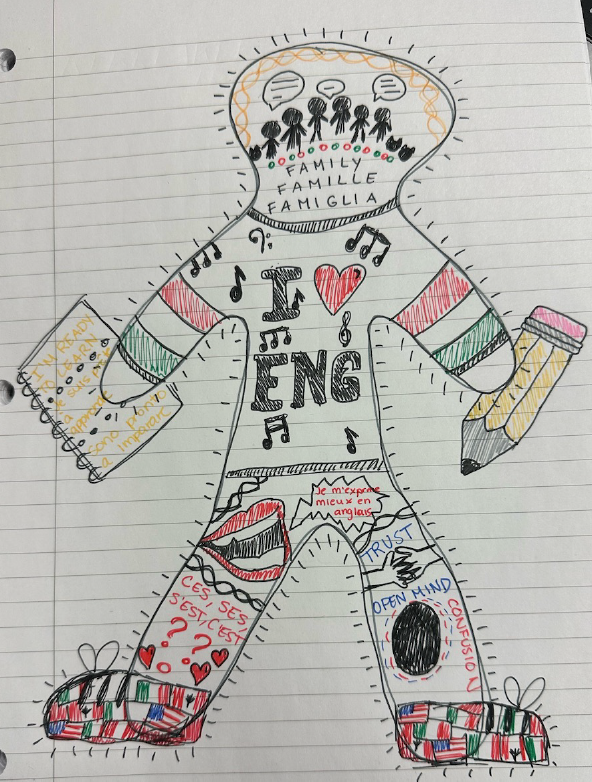
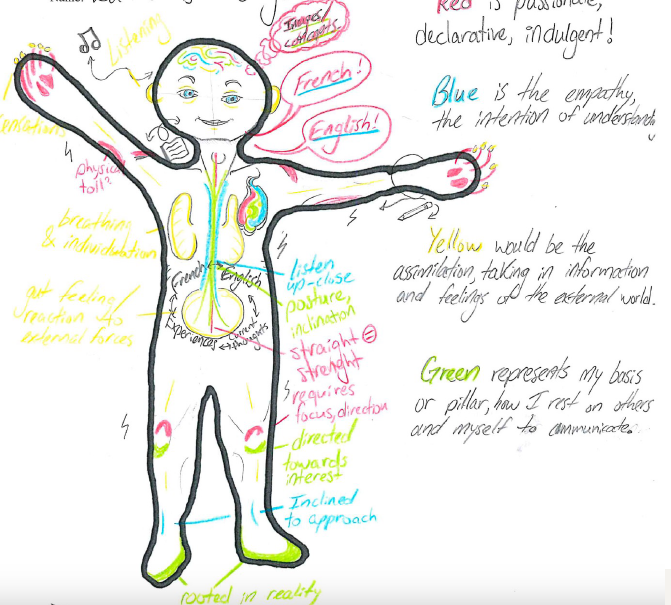
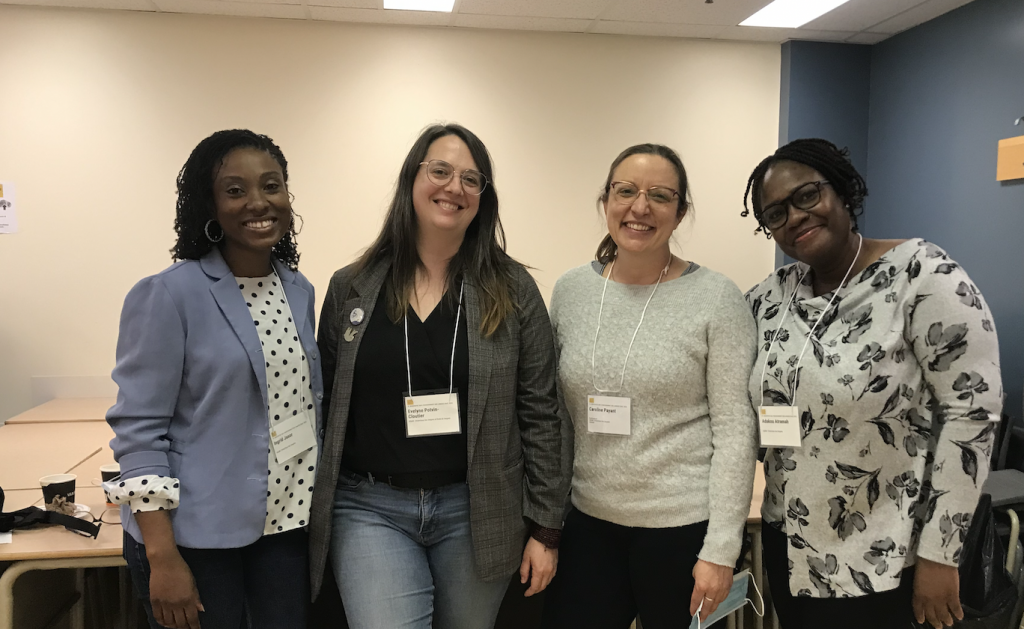
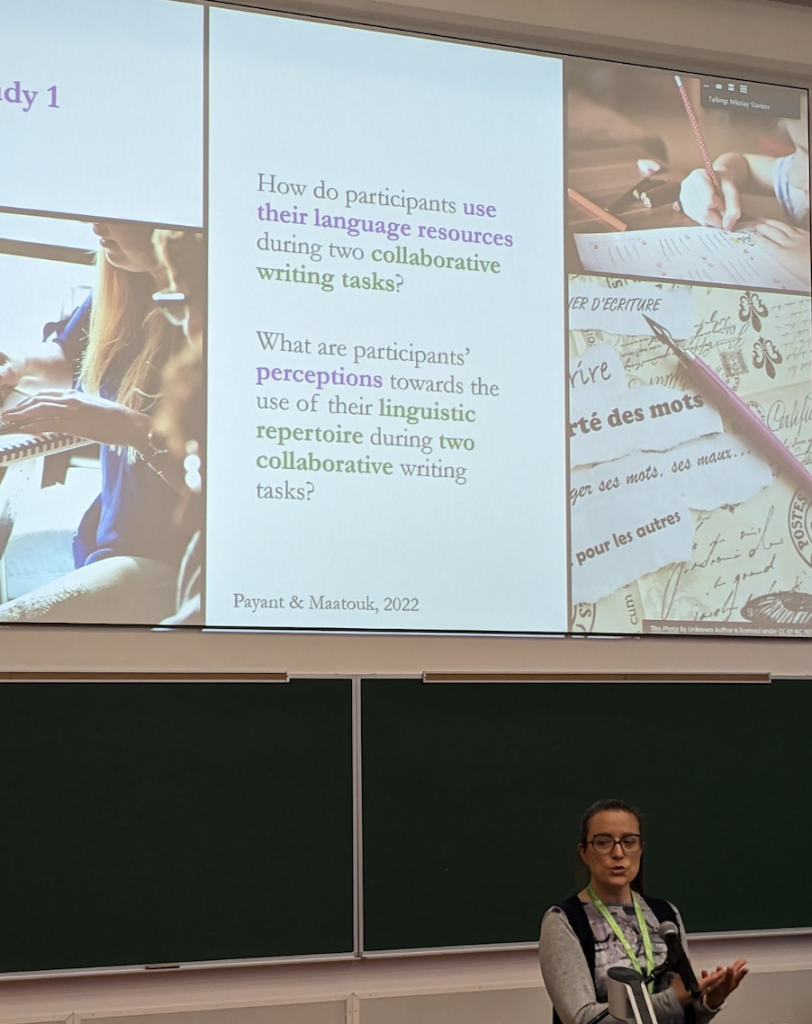

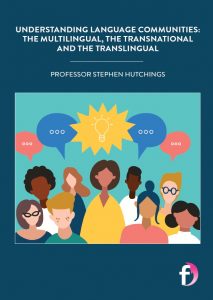
0 Comments